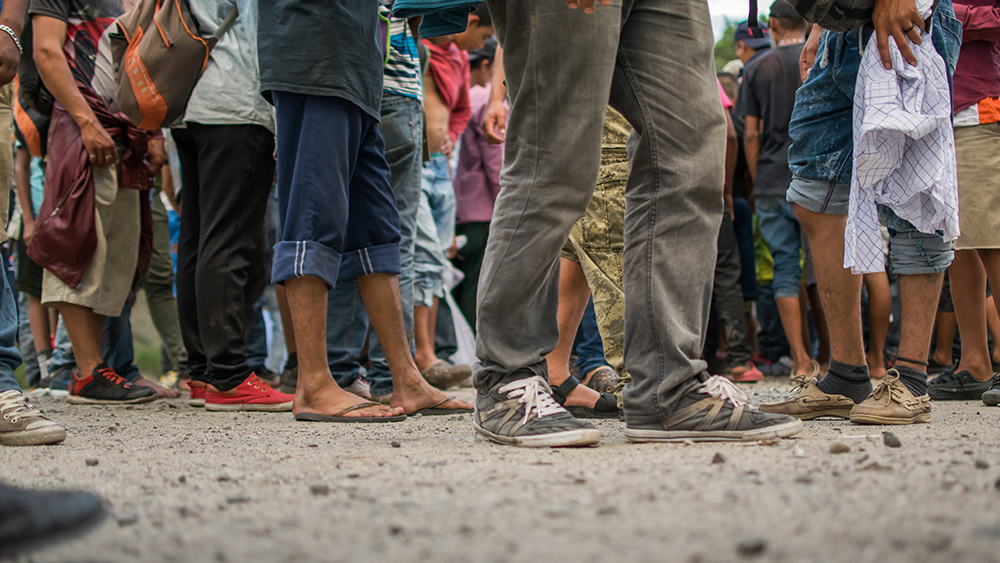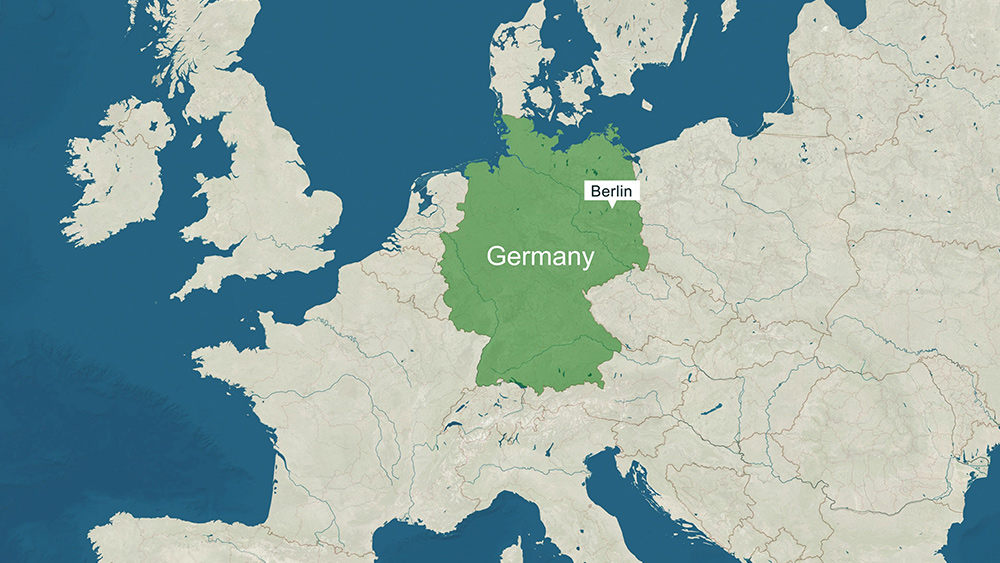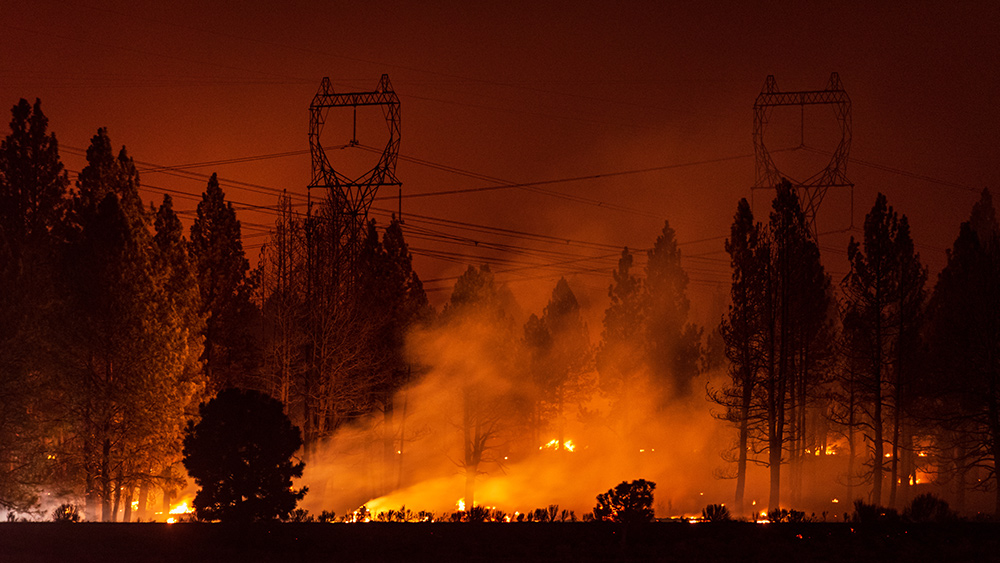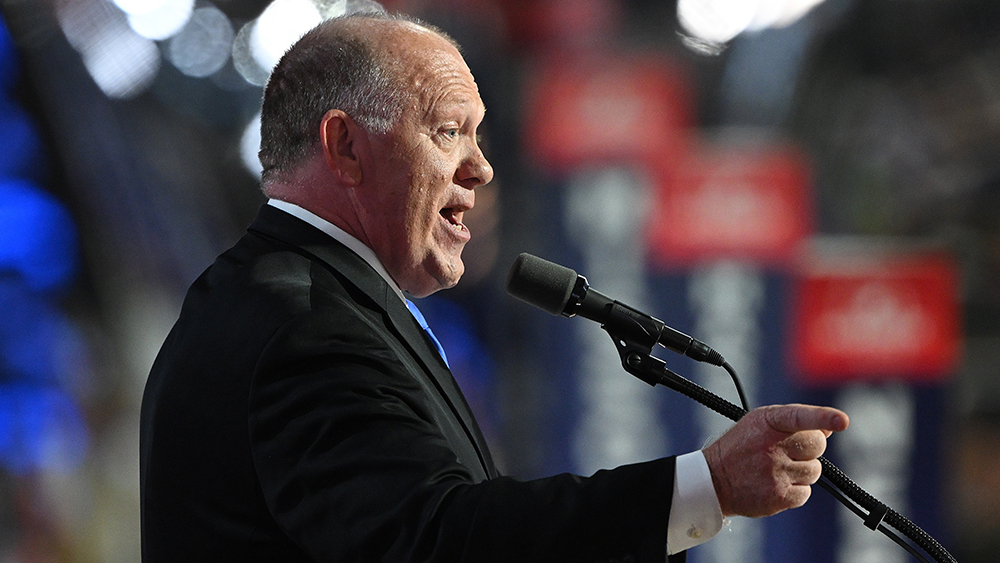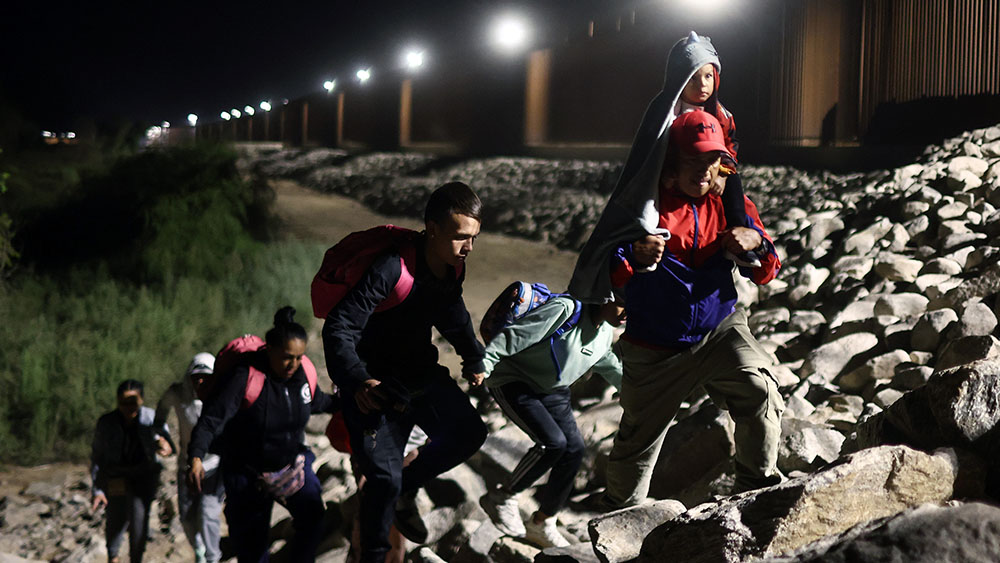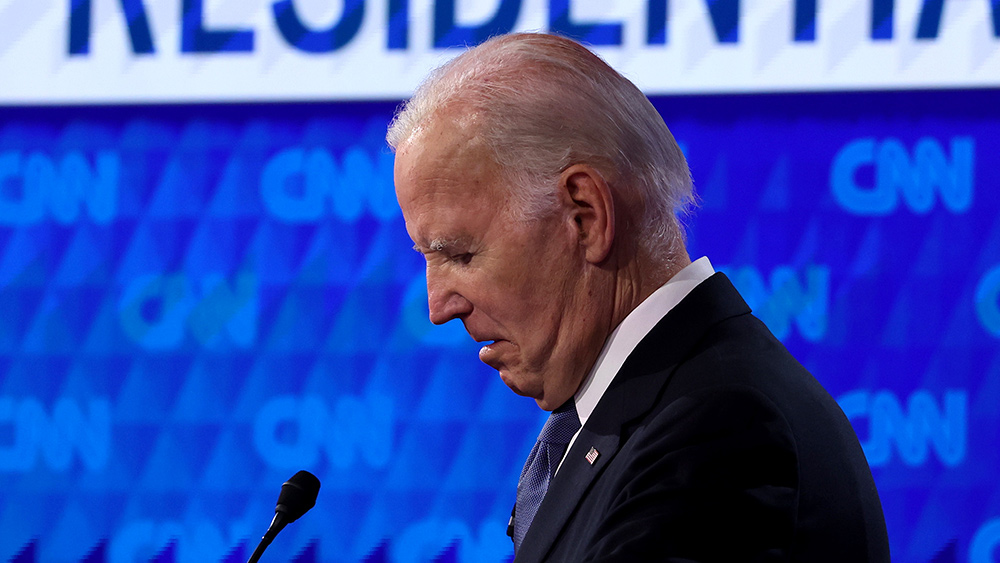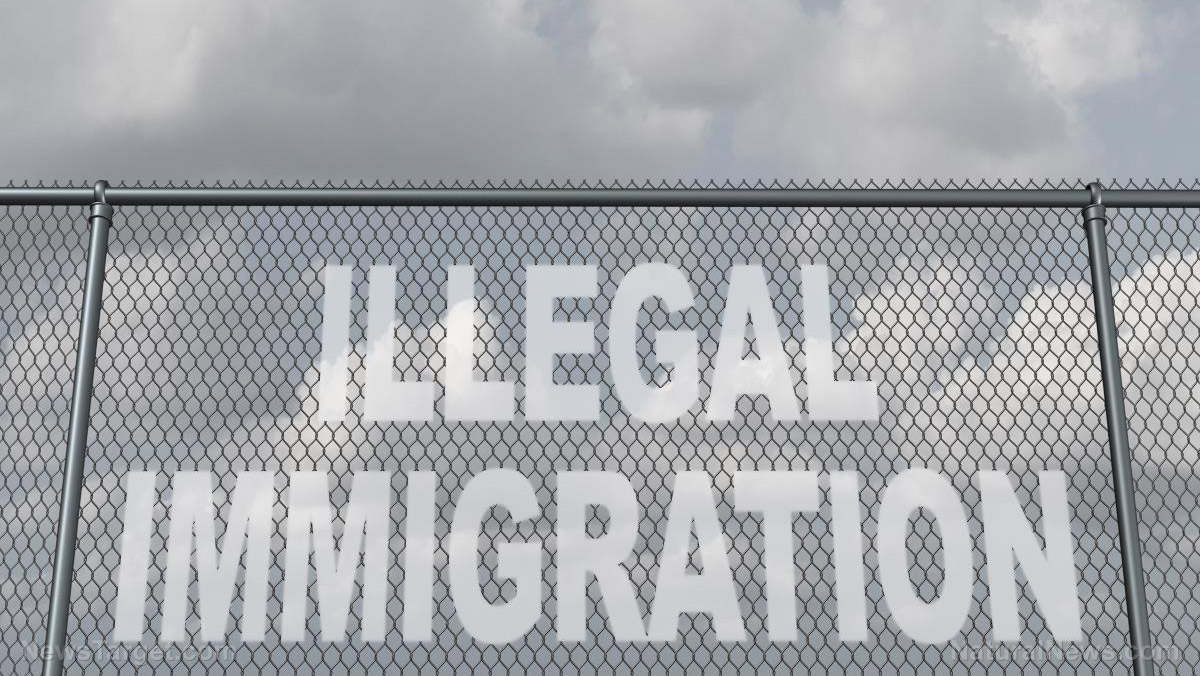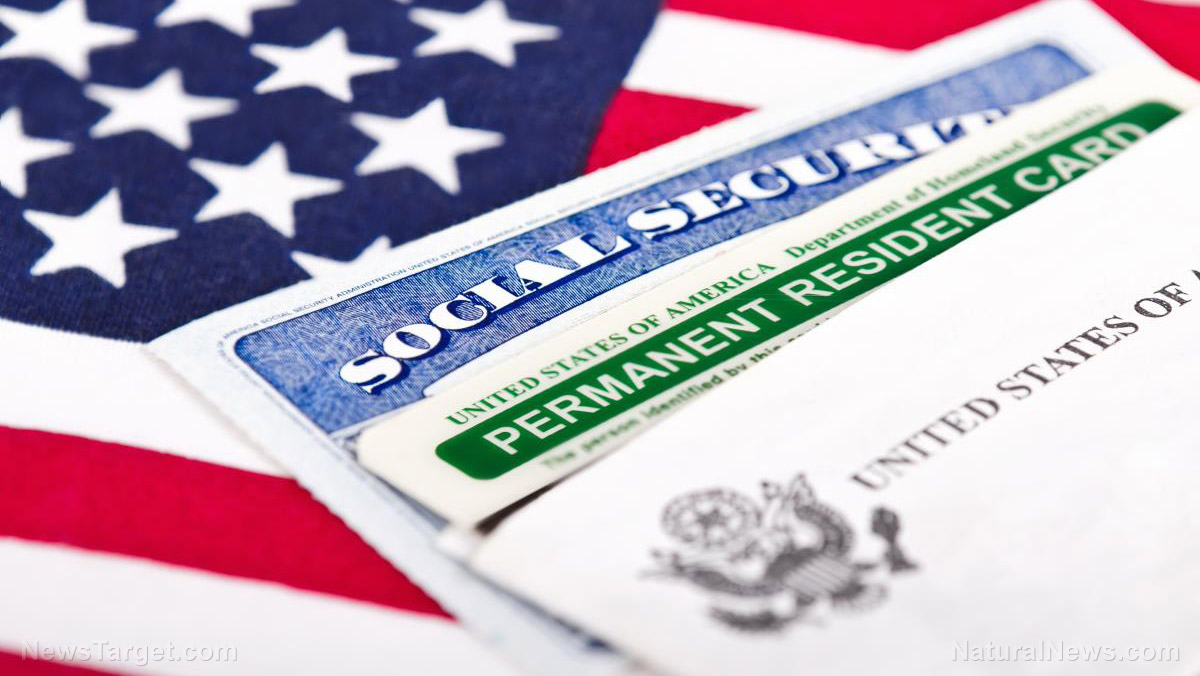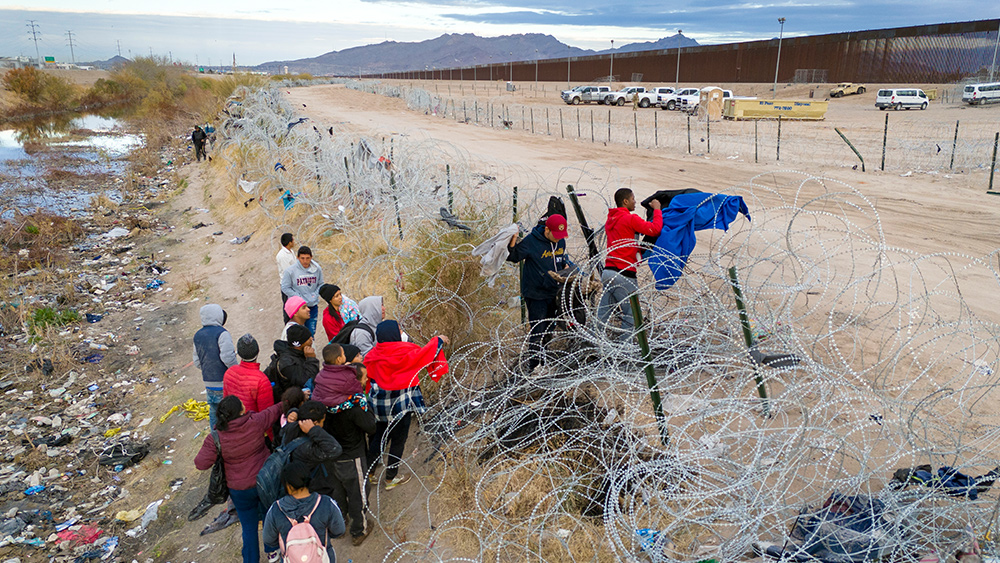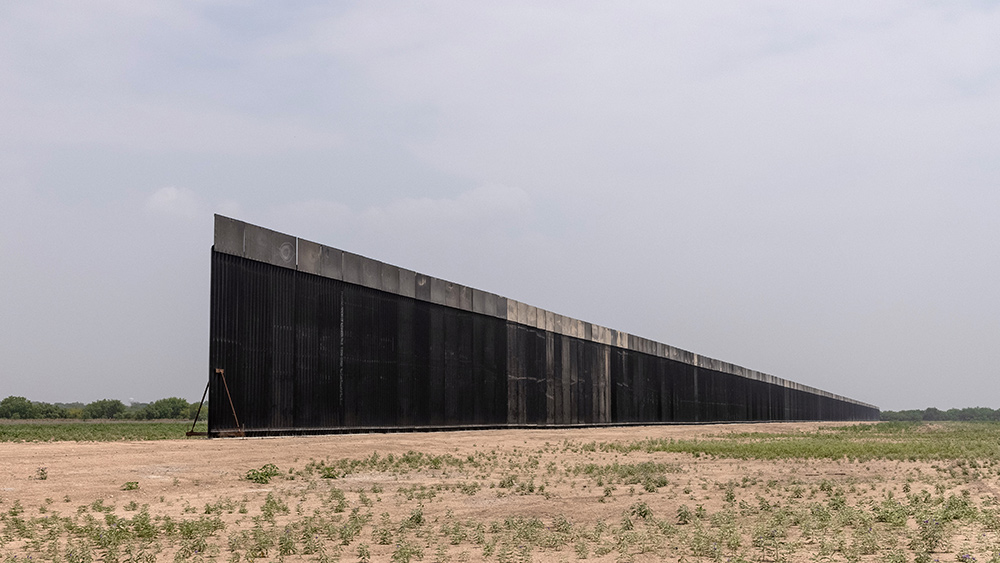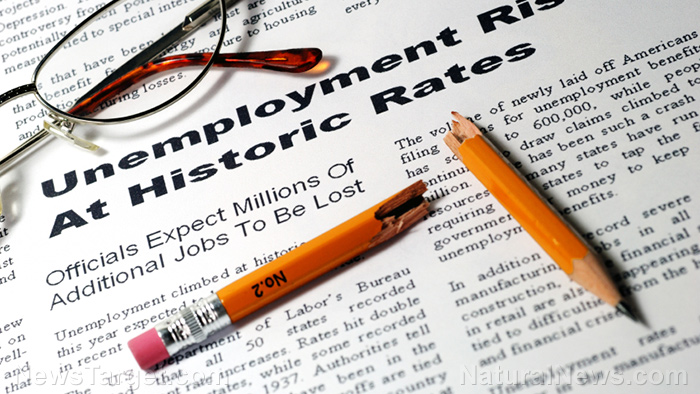The elusive brokers fueling America’s fentanyl crisis: How Mexican cartels smuggle chemicals from China
01/10/2025 / By Zoey Sky

- The U.S. fentanyl crisis is driven by a global supply chain originating in Chinese chemical factories, where precursors are produced and smuggled into Mexico. Brokers play a central role in this illicit trade, exploiting legal loopholes and corruption to transport precursors to Mexican cartels, which manufacture the drug and distribute it in the U.S.
- Brokers use sophisticated methods to evade detection, including bribing officials, disguising shipments as everyday items and exploiting the dual-use nature of fentanyl precursors (chemicals with legitimate industrial applications).
- Fentanyl, 50 times more potent than heroin, has become the leading cause of overdose deaths in the U.S., claiming over 400,000 lives in the past decade.
- The fentanyl trade is a global issue requiring international cooperation, but progress has been slow. U.S. officials face difficulties in seizing unregulated chemicals at borders, highlighting the complexity of the supply chain.
- The crisis has devastated families across the U.S., with many overdose victims unknowingly consuming fentanyl. While public health efforts, such as naloxone distribution and addiction treatment, have shown some success, experts warn against complacency.
The fentanyl crisis ravaging the United States is fueled by a deadly supply chain that begins in Chinese chemical factories and ends on American streets.
At the heart of this illicit trade are the brokers – shadowy figures who operate in the gray areas of the global chemical industry, smuggling the precursors needed to manufacture fentanyl into Mexico. These intermediaries, known as intermediarios (intermediaries), are the linchpins of a multi-billion-dollar industry that has claimed more than 400,000 American lives over the past decade.
While cartel kingpins like Joaquin “El Chapo” Guzman dominate headlines, it is the brokers who keep the fentanyl pipeline flowing. They exploit legal loopholes, bribe officials and disguise their activities behind legitimate businesses, making it nearly impossible for law enforcement to dismantle the supply chain.
Their work has turned Mexico into the world’s leading producer of illicit fentanyl, a synthetic opioid 50 times more potent than heroin.
Corruption, deception and smuggling
Brokers like Javier, a Sinaloa Cartel operative, are the unsung architects of the fentanyl trade. Javier, who spoke to reporters on the condition of anonymity, described a sophisticated operation that relies on a mix of corruption, ingenuity and brute force.
One of the most common tactics is exploiting the dual-use nature of fentanyl precursors – chemicals that have legitimate industrial applications but can also be used to manufacture drugs. These chemicals are often unregulated or lightly controlled, allowing brokers to operate in plain sight.
For example, Javier’s team imports tons of precursors through Mexico’s busiest port, Manzanillo, by bribing customs agents and naval officers. He added that his team is able to transport the chemicals out “without problems.”
Meanwhile, smaller shipments are disguised as everyday items like coffee or protein powder and shipped via air cargo to Mexico City’s international airport. From there, the packages are flown to Sinaloa, where cartel “cooks” transform them into fentanyl powder.
For larger shipments, brokers have devised even more audacious methods. Some pay off crew members on cargo ships leaving China to dump barrels of precursors into the ocean near Mexico’s coast. Fishermen, bribed with cash, retrieve the barrels and deliver them to cartel operatives.
Other brokers collude with legitimate chemical companies, using their facilities and logos to move precursors undetected. Douglas Miller, a Homeland Security Investigations (HSI) agent who tracks illicit chemical flows, explained that there is “willful blindness by certain companies all the way up the chain of command.”
Crisis on American streets
The brokers’ success has had devastating consequences. Fentanyl, often pressed into counterfeit pills or mixed with other drugs, has become the leading cause of overdose deaths in the U.S. Its potency makes it both deadly and profitable: A single kilogram of fentanyl can produce up to 500,000 counterfeit pills, each capable of killing an unsuspecting user.
Despite recent efforts to curb the crisis, including increased seizures of fentanyl at the U.S.-Mexico border, the supply chain remains robust.
Brokers like Javier and his counterparts have adapted to tighter regulations by sourcing alternative precursors and leveraging their networks of corruption. He added the number of people doing this has “mushroomed,” describing the explosion of fentanyl production in Sinaloa.
Global challenge with local consequences
The fentanyl trade is a global problem that requires international cooperation, but progress has been slow. China, the world’s leading producer of fentanyl precursors, has been reluctant to crack down on its chemical industry.
While U.S. and Chinese officials have held talks on the issue, the results have been modest at best.
In Mexico, corruption remains a significant obstacle. Despite efforts to place the navy in charge of port security, brokers continue to bribe their way through customs. The recent seizure of 1,100 kilograms of fentanyl in Sinaloa – the largest in Mexico’s history – highlights both the scale of the problem and the challenges of addressing it.
U.S. officials have pressured Mexico to better monitor its chemical industry and strengthen enforcement, but the sheer complexity of the global supply chain makes it difficult to stem the flow of precursors.
Arthur Wyatt, a top anti-narcotics prosecutor with the Department of Justice (DOJ) has explained that if an item isn’t considered a regulated chemical, it can be hard to “seize it at the border.” (Related: Amount of fentanyl seized across the U.S. this year enough to kill the combined population of America’s 5 largest states.)
Human cost of the fentanyl crisis
Behind the statistics and seizures are countless stories of loss and devastation. Families across the U.S. have been torn apart by fentanyl overdoses, often involving young people who unknowingly consumed the drug.
Public health officials have worked tirelessly to combat the crisis, distributing naloxone – a life-saving overdose reversal medication – and expanding access to addiction treatment.
While preliminary data suggests a decline in overdose deaths, experts warn against complacency. Dr. Brian Hurley, head of the American Society of Addiction Medicine, has said that one of the fears is that, “as overdoses decline, there will be complacency.”
For brokers like Javier, the human toll is irrelevant. He coldly said that no one is putting “a gun to their head to take drugs,” adding that users choose their own path.
Daunting road ahead
The fight against fentanyl is far from over. As long as brokers can exploit gaps in regulation and corruption, the supply chain will persist. Addressing the crisis requires not only stronger enforcement but also a deeper understanding of the networks that sustain it.
For now, the brokers remain in the shadows, their work fueling a crisis that shows no signs of abating. Until the world takes meaningful action to dismantle their operations, the fentanyl pipeline will continue to flow – and the death toll will continue to rise.
Visit Addiction.news for more stories about the worsening fentanyl crisis in America.
Watch the video below to learn about South American drug rings and fentanyl dealers that are operating in major U.S. cities like San Francisco.
This video is from the Son of the Republic channel on Brighteon.com.
More related stories:
California drug dealer used a drone to deliver fentanyl and other illegal drugs to customers.
Unveiling the Chinese money-laundering network driving America’s fentanyl crisis.
Nearly 10 million lethal doses of fentanyl seized in San Francisco.
Sources include:
Submit a correction >>
Tagged Under:
addiction, big government, California, conspiracy, crime, criminals, drones, drug addiction, drug cartels, Drug Dealers, Drug Enforcement Agency, drug trafficking, Fentanyl, illegal drugs, insanity, intermediarios, Los Angeles, national security, Opioids, Police, policing, real investigations, trafficking
This article may contain statements that reflect the opinion of the author
RECENT NEWS & ARTICLES
COPYRIGHT © 2018 BORDERSECURITY.NEWS
All content posted on this site is protected under Free Speech. BorderSecurity.news is not responsible for content written by contributing authors. The information on this site is provided for educational and entertainment purposes only. It is not intended as a substitute for professional advice of any kind. BorderSecurity.news assumes no responsibility for the use or misuse of this material. All trademarks, registered trademarks and service marks mentioned on this site are the property of their respective owners.

